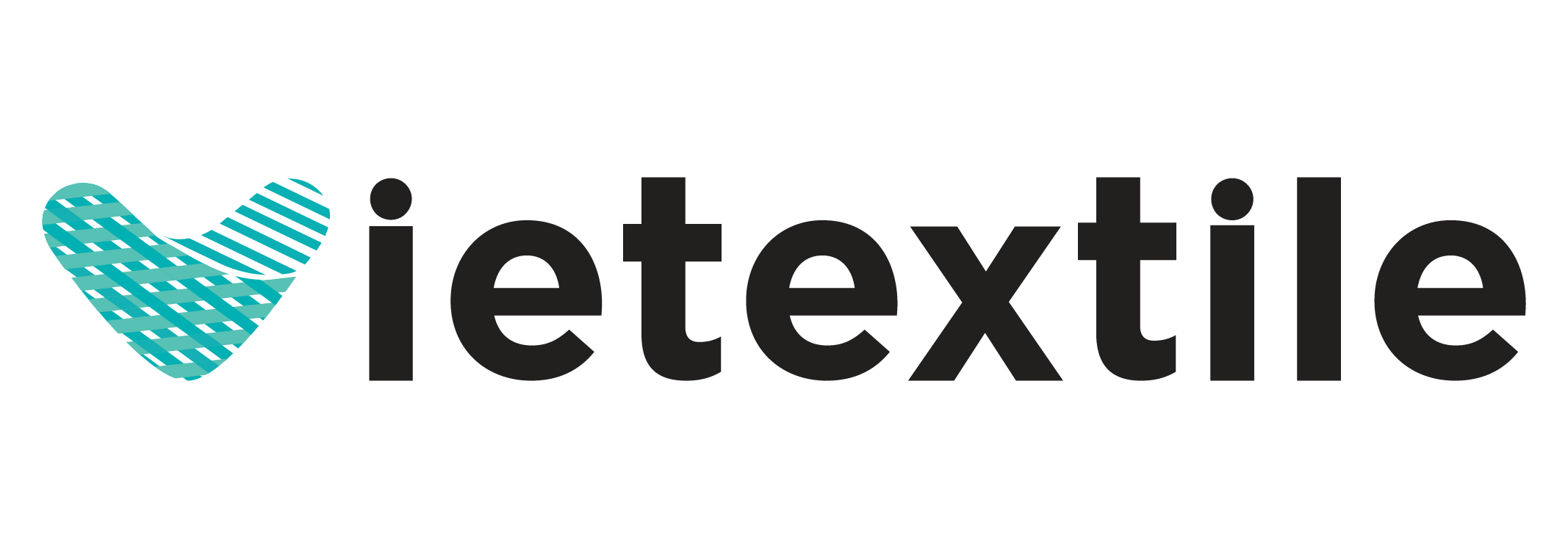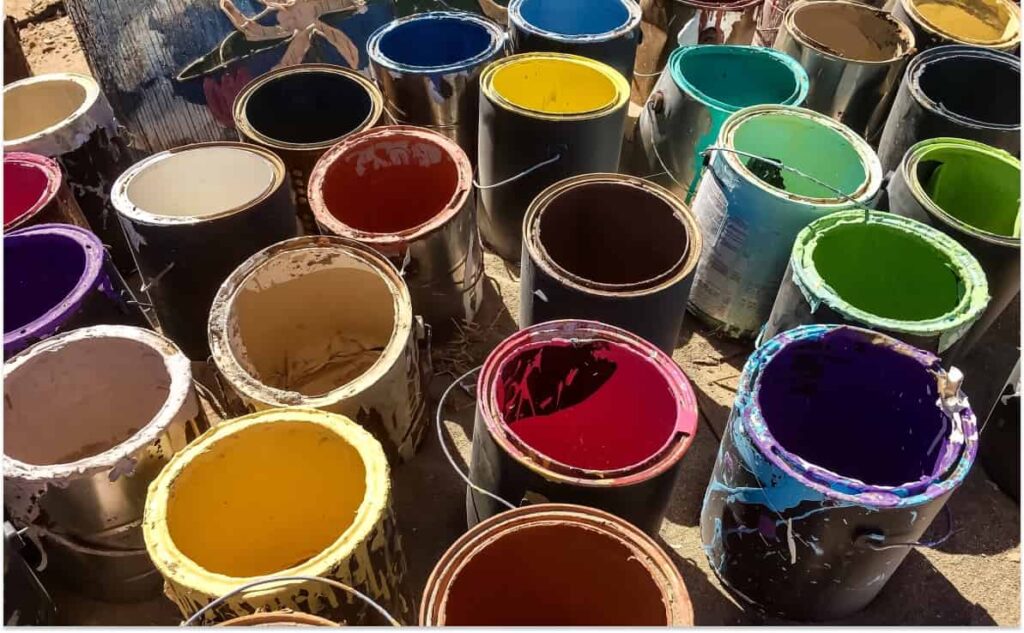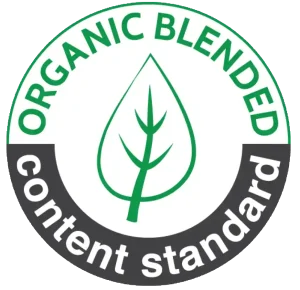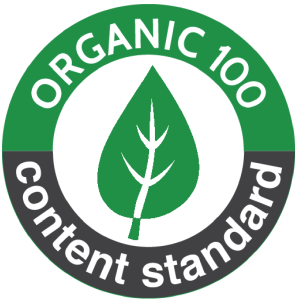Digital printing onto Nylon (Polyamide) fabric demands absolute precision, setting it entirely apart from printing on Polyester or Cotton. This article provides a detailed, step-by-step breakdown of the process using Direct-to-Nylon Acid Ink, ensuring optimal quality and color fastness.
The standard factory process is the key to maximizing the potential of Direct-to-Nylon Ink. It helps manufacturers of high-end swimwear, lingerie, and performance sportswear achieve brilliant colors and superior wash durability. Adhering to every stage, from surface treatment to color fixation, is essential for maintaining product consistency.
This guide delves into each phase, from chemical preparation and print optimization to post-treatment and quality control. We will technically analyze the functional mechanism of Direct-to-Nylon Acid Ink in a real-world production environment.
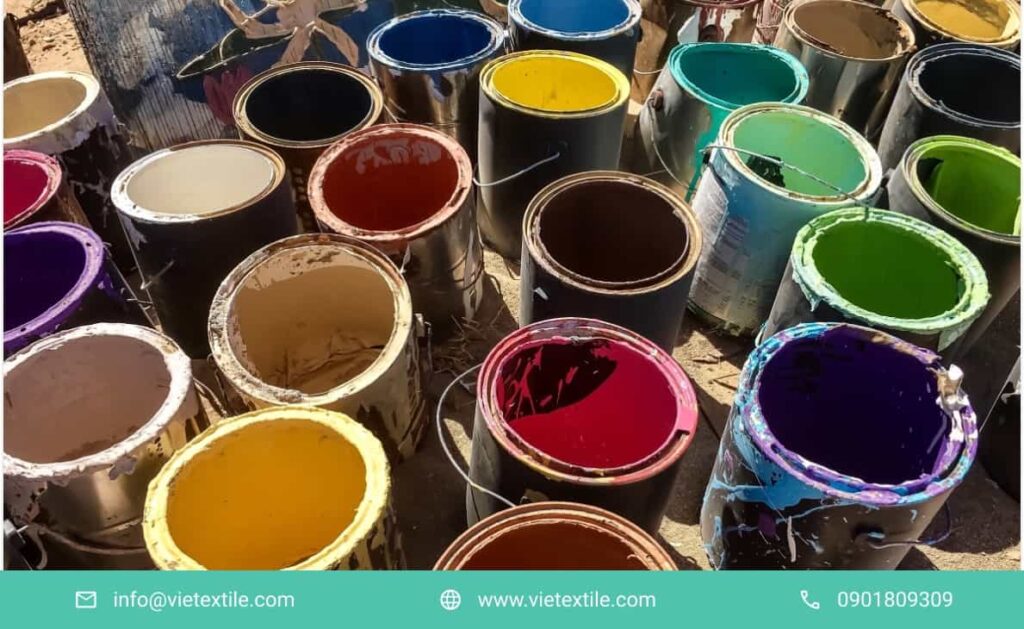
1. Overview of the Acid Ink Digital Printing Process: The Foundation for Direct-to-Nylon Ink
Nội dung tóm tắt
ToggleThe Acid Ink printing process for Nylon is divided into three main phases, each with distinct chemical and physical roles. This is the prerequisite for Direct-to-Nylon Ink to form a permanent bond with Polyamide fibers.
1.1. Three Main Stages in the Production Line
The first stage is Pre-treatment, aimed at activating the Nylon fiber surface. The second stage is Digital Printing, where the Direct-to-Nylon Ink is applied. Finally, the Post-treatment stage is where the color fixation reaction occurs, resulting in the product’s absolute fastness.
Strict control of temperature, humidity, and pH parameters across all three stages is mandatory. Any deviation can lead to weak colors, staining, or a significant reduction in fabric durability. Manufacturers must pay special attention to this when using premium Direct-to-Nylon Ink.
1.2. Why Acid Ink is the Only Choice for 100% Nylon
Nylon fibers have a polymer structure containing Amine groups (-NH2). When treated in an Acidic environment, these groups become positively charged sites (-NH3+). The Acid dye in the Direct-to-Nylon Ink carries a negative charge, creating a stable ionic bond.
This ionic bonding mechanism provides superior color fastness, especially resistance to Chlorine and hot washing, which other inks like Pigment or Reactive cannot match. Pigment inks create mechanical bonds, causing the fabric to stiffen. Direct-to-Nylon Acid Ink ensures the fabric retains its natural soft hand feel.
2. Chemical Pre-treatment Stage: Establishing the Base for Direct-to-Nylon Ink
Pre-treatment is the chemical primer that dictates the printing performance and color fastness of the Direct-to-Nylon Ink. Chemicals are applied to the fabric to create an ideal environment for dye diffusion and fixation.
2.1. Preparing the Pre-treatment Liquid
The pre-treatment solution is a complex mixture of chemicals, formulated with precise accuracy. The use of Demineralized Water is necessary to prevent heavy metal ions from affecting the purity of the Direct-to-Nylon Ink and the dyeing process.
Key components include: Acid Donor, Thickening Agent (or Thickener), and Humectants. Each plays a vital role in preparing the fabric surface. The mixing ratio must be checked and adjusted frequently to suit specific fabric batches.
2.1.1. The Role of Acid Donor and pH Control
The Acid Donor, typically Citric Acid or an Ammonium salt of an organic Acid, is the main activator. When the fabric is dried, the Acid Donor slowly releases H^+, which protonates the Nylon fiber. This creates a series of positively charged sites to attract the negative molecules of the Direct-to-Nylon Ink.
The target pH after drying must be between 4.0 and 5.0. A pH that is too high will result in insufficient protonation, reducing color uptake. Conversely, a pH that is too low can damage the Nylon fiber or cause H^+ to compete with the dye, reducing dyeing efficiency.
2.1.2. Function of the Thickening Agent
The Thickening Agent, usually a synthetic polymer, not only controls the solution’s viscosity but also manages the spread of the Direct-to-Nylon Ink droplet upon contact with the fabric. It prevents excessive “Dot Gain,” keeping fine lines and details sharp.
Furthermore, the thickener holds the dye close to the Nylon fiber surface. This maximizes the diffusion of the Direct-to-Nylon Ink into the fiber core during steaming, rather than allowing it to evaporate or wash away.
2.2. Fabric Padding Technique
Padding is the process of passing the fabric through a Padder machine to apply the pre-treatment solution. Controlling the chemical loading (Pick-up %) is a crucial step in this stage.
2.2.1. Optimizing Pick-up %
The ideal Pick-up loading typically ranges from 50\% – 70\%. Pick-up is adjusted by changing the pressure of the Nip Rolls. A Pick-up that is too low will not provide enough chemicals to activate the fiber and fix the Direct-to-Nylon Ink.
If the Pick-up is too high, the fabric will be excessively wet, leading to longer drying times, higher energy consumption, and potentially chemical residue that causes a stiff hand feel. Measuring devices or calculation formulas must be used for precise control.
2.2.2. Checking Uniformity
The uniformity of the chemicals across the entire fabric width is a prerequisite. Non-uniformity can lead to uneven shading after printing and steaming. Technicians must regularly check the Nip Roll pressure and the condition of the rubber rolls to ensure optimal chemical distribution for the Direct-to-Nylon Ink.
2.3. Drying the Pre-treatment Layer
The drying process removes the water solvent, concentrates the chemicals, and activates the Acid Donor. Drying must be performed gradually and uniformly.
2.3.1. Controlling Drying Temperature
The drying temperature is usually kept between 120*C and 150*C. The temperature must be sufficient for complete drying but not too high to avoid thermal degradation of the Nylon fiber. Thermal degradation causes fiber yellowing, negatively impacting the colors of the Direct-to-Nylon Ink, especially light colors and whites.
2.3.2. Ensuring Residual Moisture
Despite drying, a small amount of residual moisture needs to be retained in the fabric (typically 5\% – 8\%). This is thanks to the Humectants in the pre-treatment solution. This moisture aids in the easier diffusion of the Direct-to-Nylon Ink during the printing and steaming processes.
3. Digital Printer Operation: Optimizing Direct-to-Nylon Ink Jetting
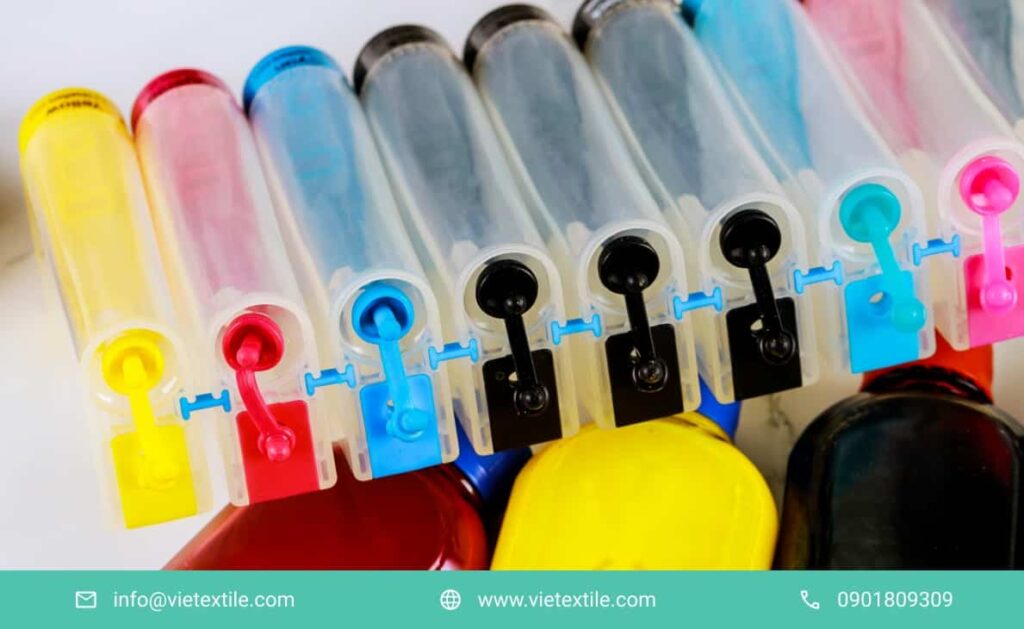
The printing stage requires a harmonious combination of Piezo electric printing technology and the physicochemical properties of the Direct-to-Nylon Acid Ink.
3.1. Equipment and Ink Preparation
Before printing, the printer system must be thoroughly checked to ensure optimal ink jetting capability. This is a critical step for maintaining sharp image quality.
3.1.1. Checking Ink Stability
Direct-to-Nylon Ink must have precisely controlled Viscosity and Surface Tension. Viscosity typically ranges from 3.0 – 5.0 mPa\cdots. A slight change in temperature can alter the viscosity, leading to non-uniform Drop Size.
The printer must have an accurate printhead temperature control system (Head Heater) to maintain stable ink temperature. This ensures the ink droplets are jetted at the precise speed and shape, optimizing contact with the pre-treatment layer.
3.1.2. Print Head Calibration (Head Voltage & Waveform)
Each type of Direct-to-Nylon Acid Ink has a different chemical formulation, requiring a specific jetting Voltage and Waveform. Technicians need to use the specifications provided by the ink and printer suppliers for calibration.
Correct calibration maximizes print head lifespan and prevents jetting errors like Partial Clogging or Misting that causes fine dots on the surface.
3.2. Color Optimization with ICC Profile
Color management is an indispensable step to ensure the printed color matches the design color on the screen (Soft Proofing).
3.2.1. Specific ICC Profile Creation Procedure
The ICC Profile is a color characteristic file created by measuring the color of the finished printed sample (after steaming and washing). Direct-to-Nylon Ink only achieves its final color Gamut after chemical and thermal fixation. Therefore, profiling from raw fabric or unsteamed samples is inaccurate.
The profile must account for the color shifts caused by the steaming temperature and the wash-off process. It is the bridge between the digital design and the physical product.
3.2.2. Controlling Ink Limit (Maximum Ink Saturation)
Ink Limit is the maximum amount of ink the printer can lay down at any given point on the fabric (usually calculated as the total % of C, M, Y, K inks). Ink Limit must be set carefully in the RIP software.
If the Ink Limit is too high, the excess Direct-to-Nylon Ink cannot be fully fixed, leading to severe Wash Out and reduced rub fastness. The ideal Ink Limit allows optimal absorption into the pre-treatment layer without overflow.
3.3. Controlling the Printing Room Environment
The ambient environment directly affects the stability of the Direct-to-Nylon Ink and the jetting process.
3.3.1. Temperature and Humidity
The printing room must maintain stable temperature (20*C – 25*C) and humidity (45% – 65% RH). Humidity that is too low can cause the ink to dry quickly at the print head (nozzle clogging), leading to printing errors.
Humidity that is too high causes the fabric to become damp, affecting image sharpness. Maintaining ideal environmental conditions is a mandatory investment to ensure continuous quality Direct-to-Nylon Ink jetting.
4. Intensive Color Fixation: Saturated Steaming Technique for Direct-to-Nylon Ink
The Fixation stage is the moist heat process where the Acid dye diffuses into the Nylon fiber and forms a permanent ionic bond. This is the decisive factor for color fastness.
4.1. Technical Analysis of Saturated Steaming
The steaming process provides both heat (to swell the fiber structure) and moisture (to create a liquid environment for the dye to migrate).
4.1.1. Precise Steaming Parameters
The ideal condition is Saturated Steam at a temperature of 102*C – 105*C with humidity \ge 95\%. Saturated steam condenses into water on the fabric. This thin layer of water acts as a solvent environment, allowing the Direct-to-Nylon Ink molecules to move.
Steaming time typically ranges from 10 to 20 minutes, depending on the color depth and the specific Nylon fabric type. The duration must be determined through trials to ensure optimization.
4.1.2. The Importance of Steaming Time
Insufficient steaming time is the primary cause of Wash Out. If the Direct-to-Nylon Ink does not have time to fully diffuse and form ionic bonds, it will be removed during the subsequent wash-off process, resulting in weak colors and material waste.
Conversely, overly long steaming can reduce the strength of the Nylon fiber, especially Elastane (Spandex) blends, which are highly sensitive to high and prolonged temperatures.
4.2. Steamer Equipment Control
The Steamer must be regularly maintained to ensure optimal operational performance.
4.2.1. Ensuring Clean Steam
The steam used must be clean and free of oil or other impurities from the Boiler. Impurities can cause irreparable stains, completely ruining the printed fabric batch with Direct-to-Nylon Ink.
The steam supply system must ensure stable pressure to maintain saturated temperature, avoiding temperature fluctuations that affect the color fixation process.
4.2.2. Handling Elastane (Spandex) Blends
For Nylon/Elastane blends (swimwear, sportswear), the steaming temperature must be strictly controlled. Elastane begins to degrade at high temperatures. The factory must adjust the process to use Direct-to-Nylon Ink formulas that fix colors faster at lower temperatures, or minimize the steaming duration.
5. Post-treatment and Finishing: Achieving Absolute Color Fastness
Post-treatment is the process of washing, removing excess ink and chemicals, and ensuring the final color fastness of the product printed with Direct-to-Nylon Ink.
5.1. Multi-step Washing Off
The wash-off procedure must be a sequence of steps controlled by chemical and temperature parameters.
5.1.1. Removing Thickener and Excess Ink
The first step is a preliminary cold/warm wash to remove the bulk of the Thickening Agent and unfixed Direct-to-Nylon Ink on the surface. If the thickener is not removed, it will make the fabric stiff and impede subsequent chemical treatment steps.
The next step is a Hot Wash using a Dispersing Agent at 40*C – 60*C. The dispersing agent keeps the excess dye suspended in the water, preventing it from re-adhering to white areas (Back Staining).
5.1.2. Application of Fixing Agent
In products requiring extremely high Chlorine Fastness (e.g., swimwear, diving gear), the use of a Cationic Fixing Agent is necessary. This agent creates an additional cationic polymer layer, strengthening the ionic bond and locking the Direct-to-Nylon Ink molecules into the fiber, maximizing color wash-out resistance.
The fixing agent must be applied and tested for compatibility to ensure it does not compromise the fabric’s soft hand feel.
5.2. Neutralization and Finishing
The final step is Neutralization. The fabric, after being exposed to an Acidic environment and other chemicals, needs to be thoroughly rinsed to achieve a neutral pH (6.5 – 7.5).
5.2.1. Ensuring Dermatological Safety
Achieving neutral pH is a mandatory requirement for garments in direct contact with skin, ensuring compliance with OEKO-TEX standards and consumer safety.
The final finishing stage may include the use of Softener to restore and improve the natural soft hand feel of the Nylon fabric after chemical and heat treatment. High-quality Direct-to-Nylon Ink will not react with these softeners.
6. Quality Control (QC) and Process Troubleshooting

Quality Control (QC) is the final step, confirming the product meets technical and fastness standards.
6.1. Fastness Testing
Color fastness tests are performed on the finished fabric sample. This demonstrates the fixation performance of the Direct-to-Nylon Ink.
6.1.1. Washing Fastness
Use the ISO 105-C06 standard. The minimum requirement is Grade 4 on the Grey Scale for both Colour Change and Staining onto the accompanying fabric. Poor wash fastness usually indicates an error in the Steaming Phase (Section 4).
6.1.2. Chlorine Fastness
Most critical for swimwear printed with Direct-to-Nylon Ink. AATCC 162 testing checks the resistance to NaOCl attack. Only the ionic bond of Acid Ink can effectively pass this test.
6.1.3. Rubbing Fastness
ISO 105-X12 standard. Poor wet rub fastness is a clear sign of insufficient Wash Off, meaning excess Direct-to-Nylon Ink has not been fully removed and remains on the fiber surface.
6.2. Color Analysis with Spectrophotometer
Use a Spectrophotometer to measure the color deviation (Delta E) against the standard sample. The ideal deviation is Delta E < 1.0.
6.3. Common Troubleshooting Scenarios
- Problem: Color washes out/fades after washing (Wash Out).
- Cause: Insufficient Steaming time or temperature, or the pre-treatment layer pH was not acidic enough to activate the Nylon fiber.
- Solution: Increase Steaming time/temperature; check and adjust the pH of the Direct-to-Nylon Ink pre-treatment solution.
- Problem: Stiff Hand Feel.
- Cause: Excessive Thickening Agent in the pre-treatment, or insufficient Wash Off to remove it.
- Solution: Reduce Pick-up \%; increase Wash Off efficiency, or consider using a Softener after neutralization.
7. VieTextile’s Role in Direct-to-Nylon Ink Technology
VieTextile is a strategic partner, providing comprehensive solutions to optimize the use of Direct-to-Nylon Acid Ink in your production process.
We supply Direct-to-Nylon Ink lines that meet the most stringent technical and environmental standards, including ZDHC MRSL Level 3 certification. This ensures your printing process is not only efficient but also sustainable and safe for consumers. VieTextile is committed to partnering with factories to achieve leading product quality.
VieTextile’s team of engineers provides specialized consulting services for ICC Profile calibration and printhead Waveform optimization. Precise adjustment of these parameters is key to ensuring the Direct-to-Nylon Ink is jetted with the perfect drop size, increasing sharpness and minimizing errors. This technical support helps reduce machine downtime.
We offer specialized pre-treatment and post-treatment chemicals, designed to work synergistically with Direct-to-Nylon Acid Ink. These chemicals include high-purity Acid Donor and high-performance Cationic Fixing Agents. Using a complete set of synchronized chemical solutions ensures a stable printing process and maximum color fastness.
VieTextile continuously researches and updates the latest Acid Ink technologies, including future Direct-to-Nylon Ink solutions for Dry Heat Fixation. Our goal is to help customers simplify the Steaming process and minimize energy costs. Partnering with VieTextile guarantees you stay ahead in Nylon printing technology.
8. Frequently Asked Questions (FAQ) About Direct-to-Nylon Ink
8.1. Can Direct-to-Nylon Ink be used for Polyester Fabric?
Answer: No. Direct-to-Nylon Ink (Acid Ink) is specifically designed to create an ionic bond with the Amine groups of Nylon and protein fibers. For Polyester, you must use Disperse Ink (Sublimation Ink) to create a dispersion link at high temperatures.
8.2. How to fix a stiff hand feel after printing with Direct-to-Nylon Ink?
Answer: A stiff hand feel is usually caused by residual Thickening Agent or Fixing Agent. You need to optimize the Pick-up % during pre-treatment and increase Wash Off efficiency by using an effective Dispersing Agent. Then, apply a high-quality Softener after neutralization.
8.3. What is the ideal Steaming temperature when using Direct-to-Nylon Ink?
Answer: The ideal temperature is 102*C – 105*C (Saturated Steam), maintained for 10 to 20 minutes. This condition is necessary for the dye in the Direct-to-Nylon Ink to fully diffuse and form a permanent ionic bond with the Polyamide fiber.
8.4. Does Acid Ink meet ZDHC standards when printed on Nylon?
Answer: Direct-to-Nylon Ink distributed by reputable suppliers like VieTextile must strictly comply with the ZDHC MRSL (Manufacturing Restricted Substances List). This ensures the ink is free of banned heavy metals or hazardous chemicals, making your production process safe and sustainable.
8.5. Does Direct-to-Nylon Ink have higher UV resistance than other inks?
Answer: Light fastness (UV) depends on the type of Acid dye used (Super-Milling Dyes). Premium Direct-to-Nylon Inks offer very high light fastness (typically Grade 5 or higher) due to their large molecular size and strong chemical bonding capability.
8.6. How to ensure pH stability throughout the Direct-to-Nylon Ink printing process?
Answer: To ensure pH stability, the factory must check and adjust the pH of the pre-treatment solution daily using an electronic pH meter. Furthermore, checking the pH of the fabric after drying (4.0 – 5.0) is mandatory to confirm the acidic environment has been correctly established for the Direct-to-Nylon Ink reaction.
9. Contact VieTextile to Optimize Your Factory Standard Direct-to-Nylon Ink Process
The Direct-to-Nylon Printing process is a complex chain of technological links. Controlling the Steaming temperature, the purity of the Direct-to-Nylon Ink, and the accuracy of the pre-treatment chemicals are the factors that determine success. Do not let small technical errors affect the quality of your high-end products.
To acquire the highest quality Direct-to-Nylon Acid Ink solution, supported by a factory standard operational process and a commitment to ZDHC compliance, contact our specialists. We provide comprehensive technical consultation, from printer setup to post-treatment chemical optimization, helping you achieve absolute color fastness on all Nylon products.
Contact Information:
Hotline: 0901 809 309
Email: info@vietextile.com
Website: https://vietextile.com
